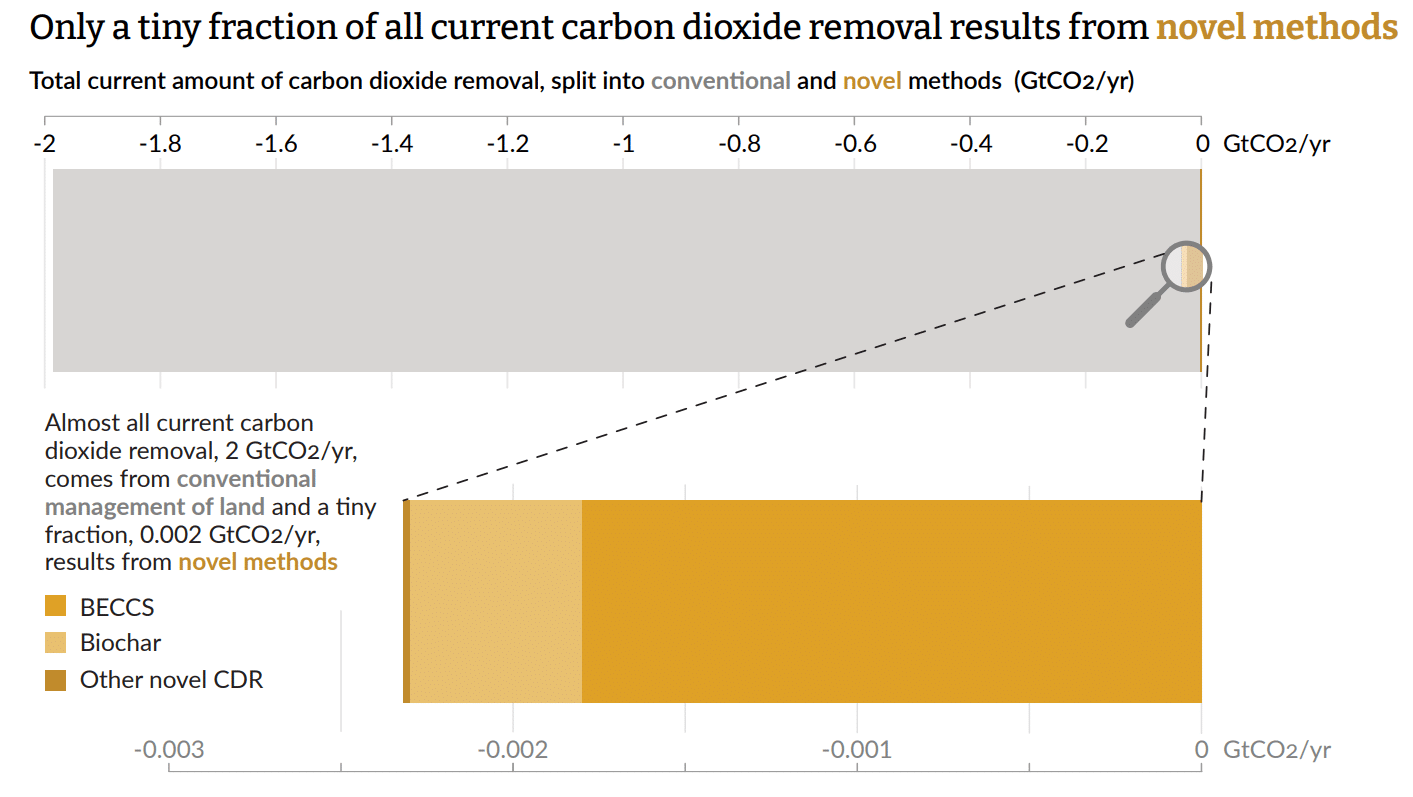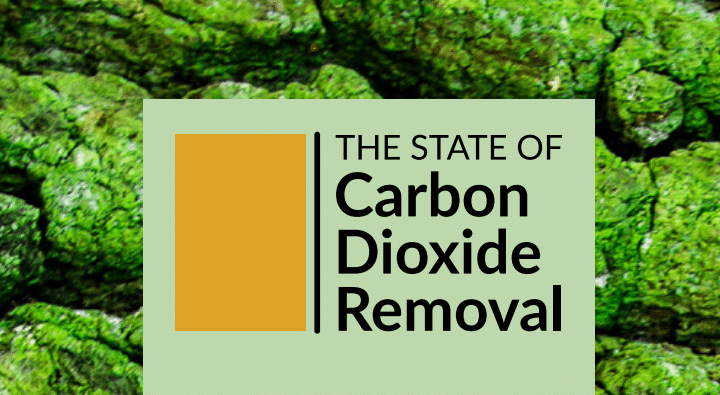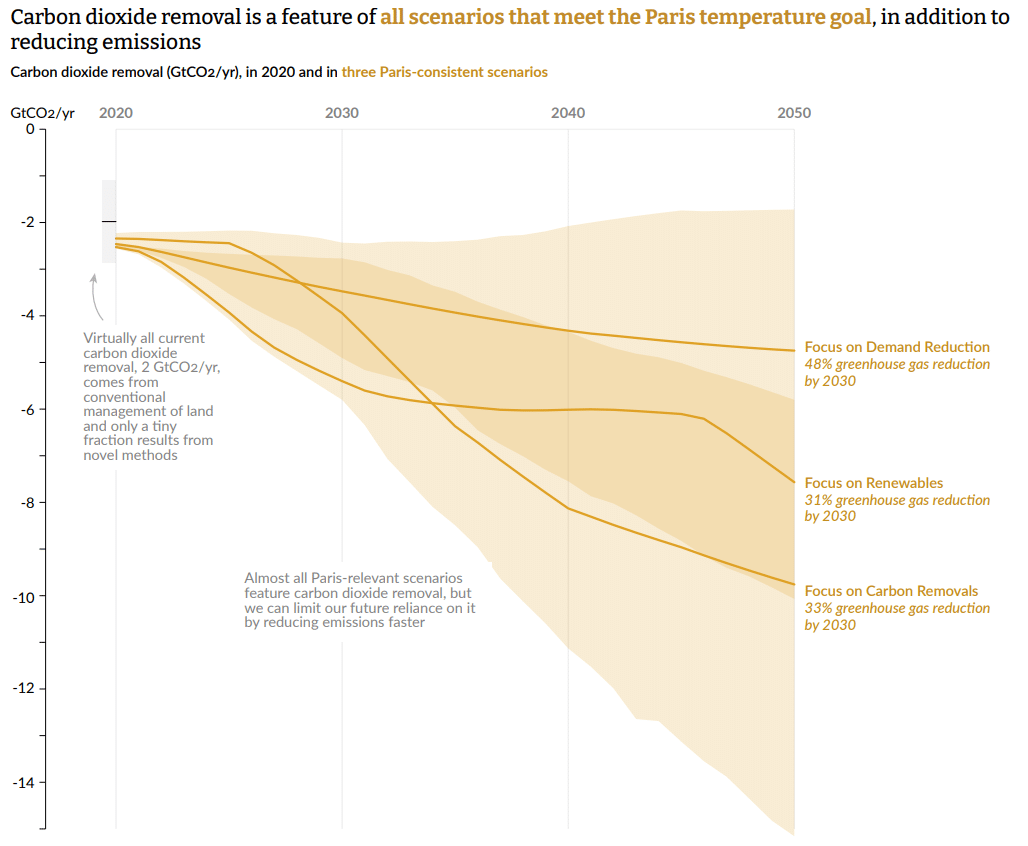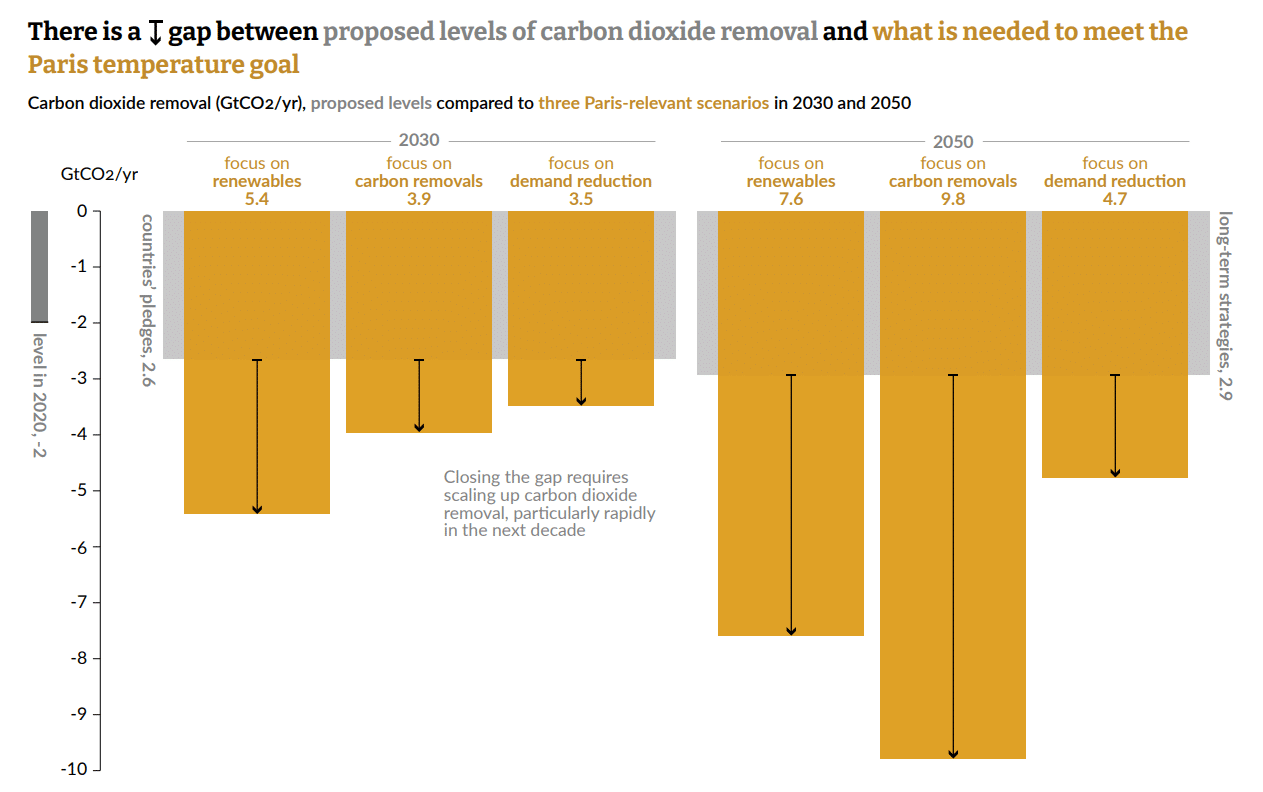Boosting Carbon Dioxide Removal (CDR) is crucial alongside rapidly cutting emissions to meet the Paris Agreement’s climate targets. A detailed report, analyzing the industry’s various key aspects, looks at the current state of the CDR.
The authors found that there’s a big difference between what countries plan to do and what’s needed to meet the global climate goals.
The report is done by experts in the field of CDR, who are authors of Intergovernmental Panel on Climate Change (IPCC) reports and lead major CDR research projects.
Bridging the Carbon Removal Gap
To keep warming below 2°C, the world needs to remove vast amounts of CO2 from the air. CDR includes ways to capture CO2 and keep it stored in places like soil, oceans, or products. Examples include planting more trees, using certain technologies to capture carbon and storing it.
For the first time, the report estimated the total amount of CDR currently being deployed globally. It found that most current CDR (2 billion tonnes of CO2 a year) comes from traditional methods like planting trees. That translates to 99.9% of virtually all current CDR, primarily through afforestation and reforestation.
Only a very small fraction – 0.1% or 0.002 GtCO₂/year – comes from new CDR methods, as shown below. Examples of novel CDR are Bioenergy with Carbon Capture and Storage (BECCS), biochar, and Direct Air Carbon Capture and Storage (DACCS).

Countries need to work hard to meet these goals by using policies and better land management to amplify these efforts. It’s a big challenge, but it’s essential to tackle climate change.
The “CDR gap” size varies among scenarios based on how the world shapes the global economy toward net zero emissions. But right now, countries have limited plans to increase CDR beyond current levels, creating a significant shortage.
National Commitments vs. Concrete Plans
According to the report, around 120 national governments have a net zero emissions target, implying the use of CDR for residual emissions. However, only a few have actionable plans for developing CDR in their Nationally Determined Contributions (NDCs), particularly for new methods.
The chart above shows that CDR is crucial in scenarios to meet the Paris Agreement’s temperature goal, alongside emission reductions.
Closing the CDR gap, illustrated below, needs rapid growth of novel carbon removal methods.
The analysts suggest that novel CDR grows by a factor of 30 by the decade end and as much as 540 in certain scenarios. That growth goes up to a factor of 1,300 and as much as 4,900 in certain scenarios by 2050.
Innovation in CDR approaches has expanded significantly in recent years. It is evident in >$4 billion of public funds injected into Research, Development and Demonstration (RD&D) on CDR. Moreover, a total of about $200 million was invested in CDR from 2020 to 2022.
Buyers of CDR credits have also shown growing support for novel methods. CDR purchases soared 437% in the first half of 2023.
Public discussions about CDR are also increasing, yet awareness about it remains lower compared to other climate change aspects. Studies show that while people support research on CDR, they worry about its large-scale implementation.
In particular, methods like afforestation, which seem more natural, receive better public perception compared to other CDR approaches. On Twitter, talks about CDR are rising, with most methods garnering positive sentiment, except for BECCS.
The Rising Profile of Carbon Removal
Given the uncertainties surrounding scaling up CDR, emitters can reduce reliance on it by swiftly cutting emissions and using energy more efficiently.
Scientific scenarios outline various pathways to meet climate goals, suggesting various strategies like reducing fossil fuel use, switching to electric power in most sectors, stopping deforestation, and deploying both traditional and new CDR methods on land.
Notably, new and innovative startups in the carbon removal sector show a strong dedication to fighting climate change by creating practical solutions to store CO2 in various environments.
Though there are doubts about how well these methods can be scaled up, the substantial investments going into these projects highlight a growing belief in their crucial role in tackling climate change.
The global effort to limit temperature rise requires a robust strategy to close the Carbon Dioxide Removal (CDR) gap. Balancing traditional methods with innovative techniques is essential. Governments and industries must prioritize CDR development alongside emission reductions for a sustainable, low-carbon future.




